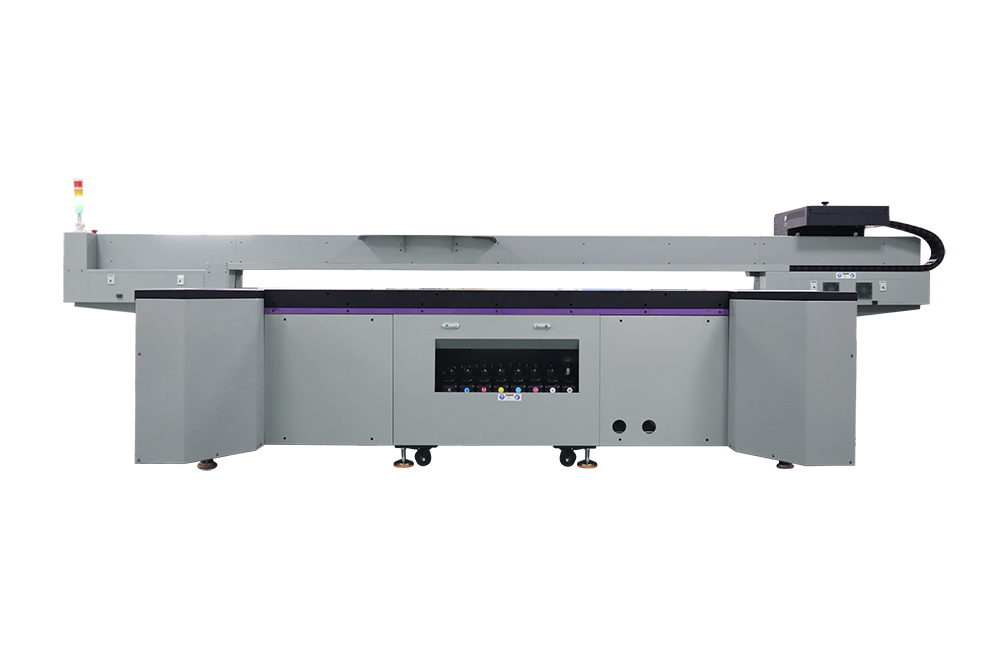How Does a UV Flatbed Printer Handle Different Types of Media?
How Does a UV Flatbed Printer Handle Different Types of Media?
UV flatbed printers have revolutionized the printing industry by offering versatility, precision, and high-quality output on a wide range of materials. These printers utilize ultraviolet (UV) light to cure or dry ink instantly after it is applied to the media, enabling them to print on various surfaces without the need for pre-treatment or extensive drying time. This technology allows for the production of durable, vibrant prints that can withstand harsh environments and extensive use. In this article, we will explore how UV flatbed printers handle different types of media, including rigid materials, flexible materials, and specialty substrates.

Rigid Materials
Rigid materials are one of the most common types of media used in UV flatbed printing. These materials are sturdy and do not bend or flex easily, making them ideal for applications that require structural integrity. Some examples of rigid materials include glass, acrylic, wood, metal, and certain types of plastic.
UV flatbed printers handle rigid materials with ease due to their flatbed design, which provides a stable platform for the media. The printer’s vacuum system or mechanical clamps secure the material in place, ensuring that it remains stationary during the printing process. This stability is crucial for achieving precise and accurate prints, especially when working with materials that have a high degree of reflectivity, such as glass or metal.
When printing on rigid materials, UV flatbed printers can produce prints with exceptional detail and color accuracy. The UV ink used in these printers is formulated to adhere to a wide range of surfaces, including non-porous materials like glass and metal. The instant curing process of UV ink ensures that the print is dry and ready for handling immediately after printing, reducing the risk of smudging or bleeding.
Moreover, UV flatbed printers can accommodate rigid materials of various sizes and thicknesses. This flexibility allows for the production of customized prints on unique shapes and sizes, making UV flatbed printing an ideal choice for applications such as signage, architectural elements, and point-of-purchase displays.
Flexible Materials
Flexible materials pose a unique challenge for printing, as they can be prone to stretching, wrinkling, or warping during the printing process. However, UV flatbed printers are equipped to handle a wide range of flexible media, including vinyl, fabric, leather, and certain types of flexible plastic.
To accommodate flexible materials, UV flatbed printers often feature adjustable print beds or specialized media holders. These adjustments allow the printer to maintain a consistent distance between the print head and the material, ensuring that the ink is applied evenly and accurately. Additionally, some printers may use a combination of vacuum systems and mechanical clamps to secure flexible materials in place, preventing them from shifting or moving during printing.
When printing on flexible materials, UV flatbed printers offer several advantages. The instant curing process of UV ink ensures that the print is dry and ready for handling immediately after printing, reducing the risk of smudging or bleeding on the material. This is particularly important for materials like vinyl or fabric, which may be susceptible to ink transfer if not properly cured.
Furthermore, UV flatbed printers can produce prints with vibrant colors and high durability on flexible materials. The UV ink used in these printers is formulated to adhere to a wide range of surfaces, including porous materials like fabric and leather. This allows for the production of high-quality prints that can withstand wear and tear, making UV flatbed printing an ideal choice for applications such as apparel, soft signage, and promotional products.
Specialty Substrates
UV flatbed printers are also capable of handling specialty substrates, which are materials that have unique properties or require special handling during the printing process. Some examples of specialty substrates include foam, corrugated plastic, and materials with textured surfaces.
When printing on specialty substrates, UV flatbed printers may require additional adjustments or modifications to ensure optimal print quality. For example, when printing on foam or corrugated plastic, the printer may need to adjust the print head distance or use specialized ink formulations to achieve the desired results. Similarly, when printing on materials with textured surfaces, the printer may need to adjust the ink flow or printing speed to ensure that the ink is applied evenly and accurately.
Despite these challenges, UV flatbed printers are highly adaptable and can produce exceptional prints on specialty substrates. The instant curing process of UV ink ensures that the print is dry and ready for handling immediately after printing, regardless of the material’s unique properties. This allows for the production of high-quality prints on a wide range of specialty substrates, making UV flatbed printing an ideal choice for applications such as packaging, promotional products, and architectural elements.
Conclusion
UV flatbed printers offer unparalleled versatility and precision when it comes to handling different types of media. From rigid materials like glass and metal to flexible materials like vinyl and fabric, and even specialty substrates like foam and corrugated plastic, UV flatbed printers are capable of producing high-quality prints on a wide range of surfaces. The instant curing process of UV ink ensures that prints are dry and ready for handling immediately after printing, reducing the risk of smudging or bleeding and allowing for the production of durable, vibrant prints that can withstand harsh environments and extensive use. As the printing industry continues to evolve, UV flatbed printers will remain a valuable tool for businesses and individuals seeking to produce high-quality prints on a variety of media.
